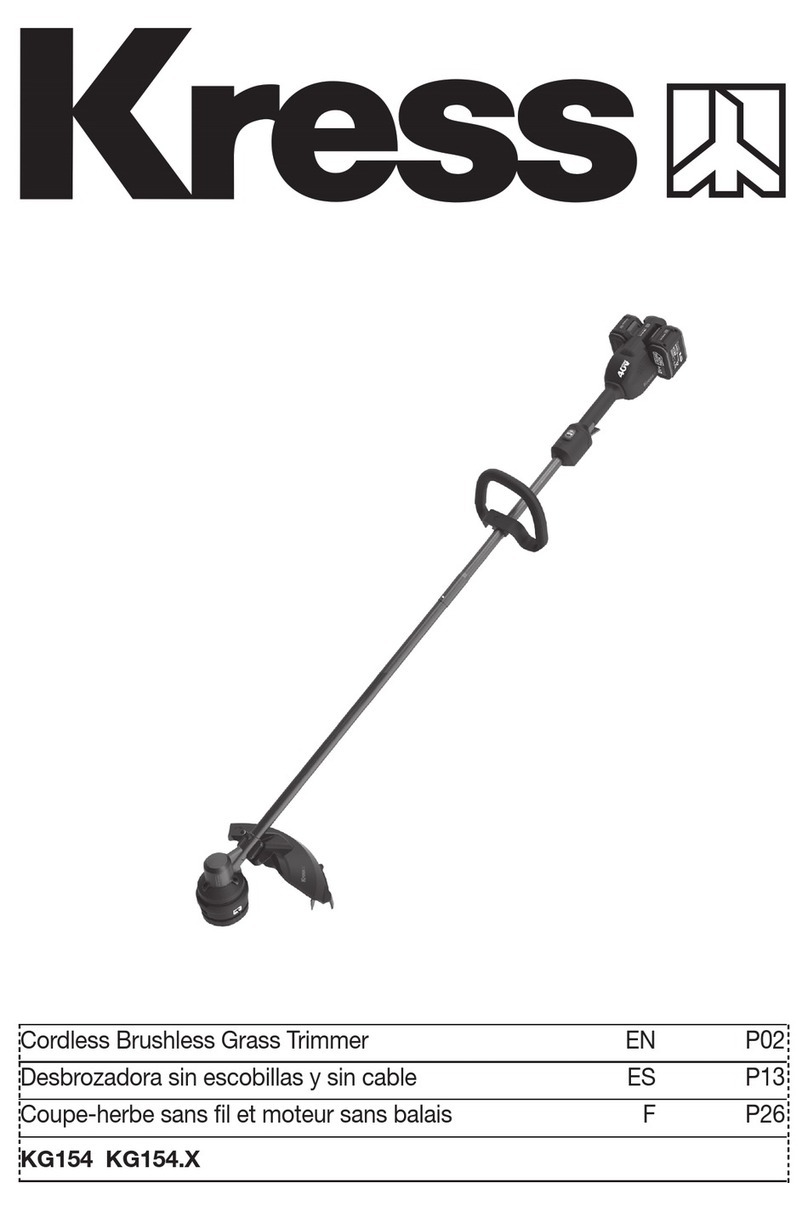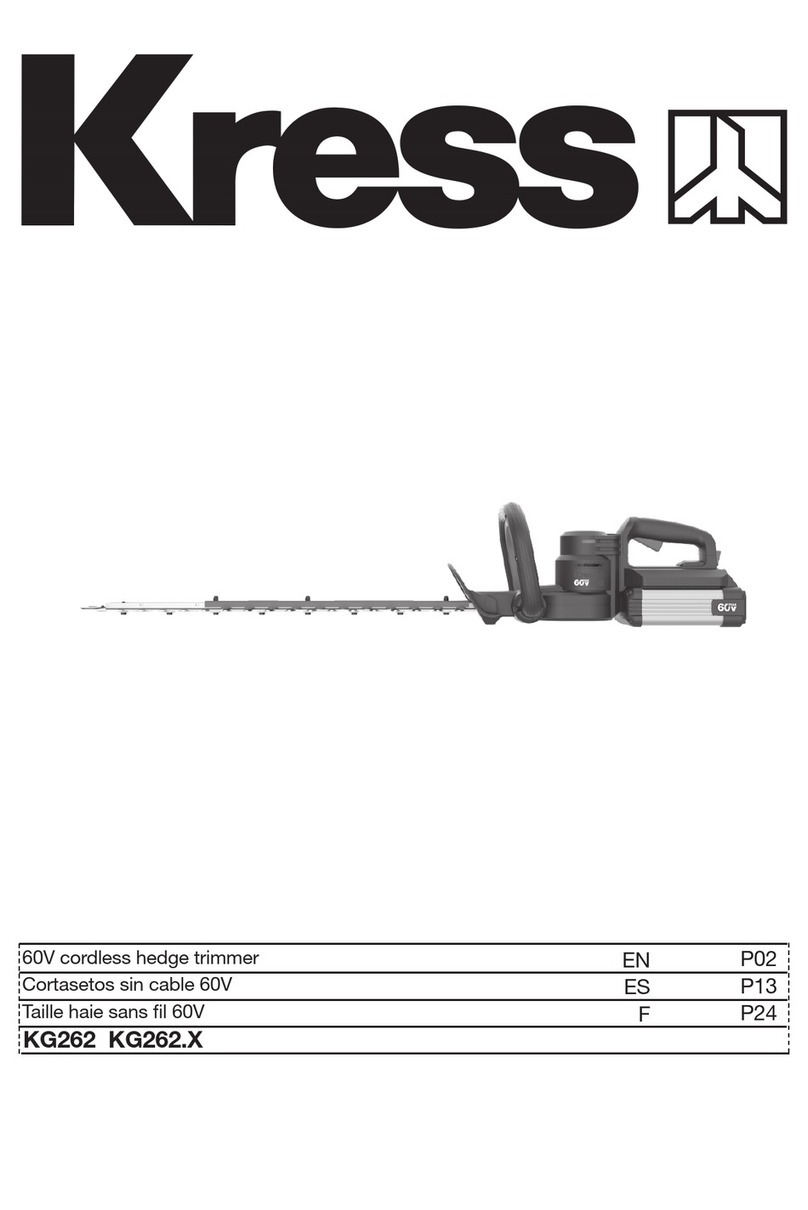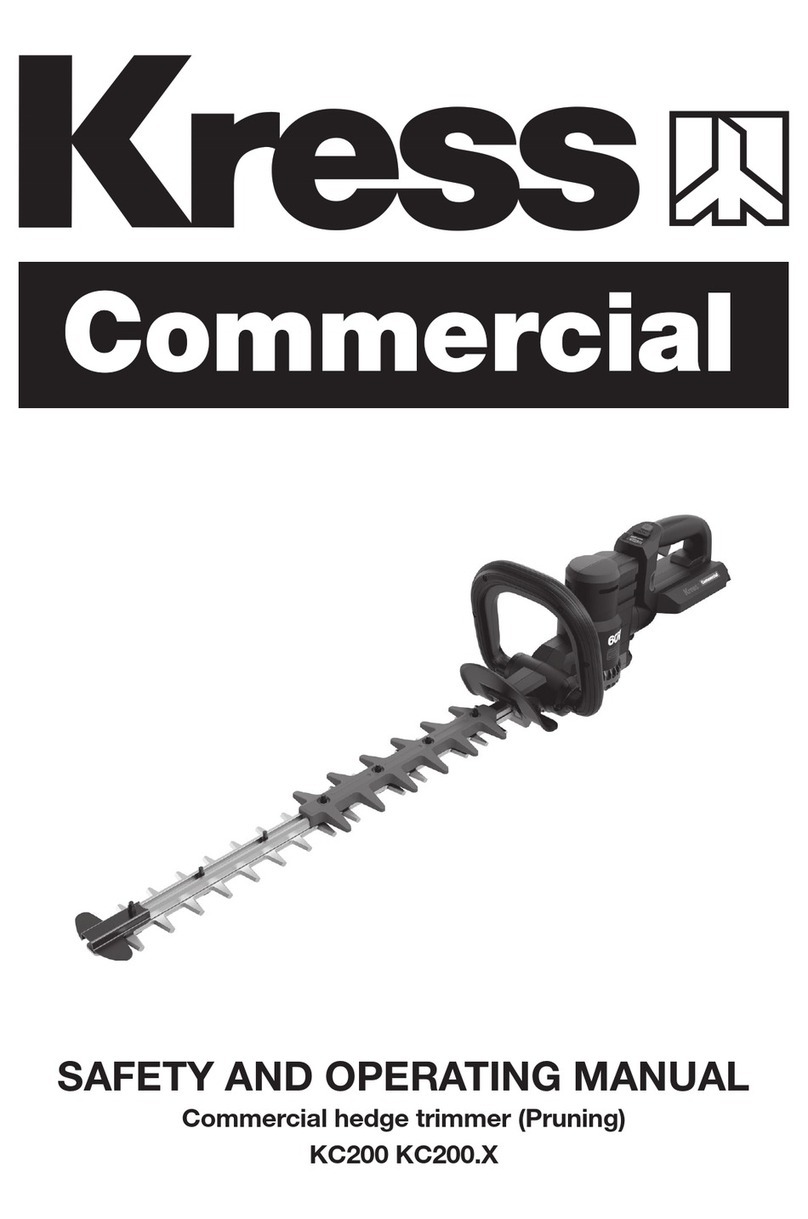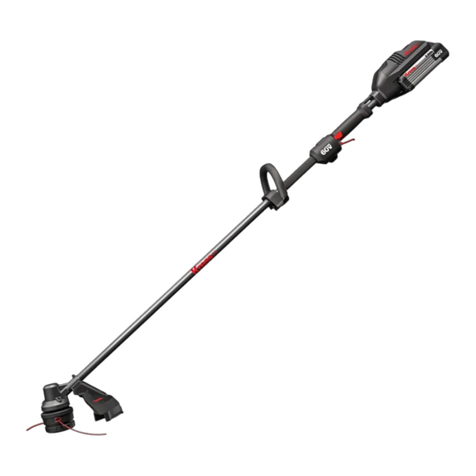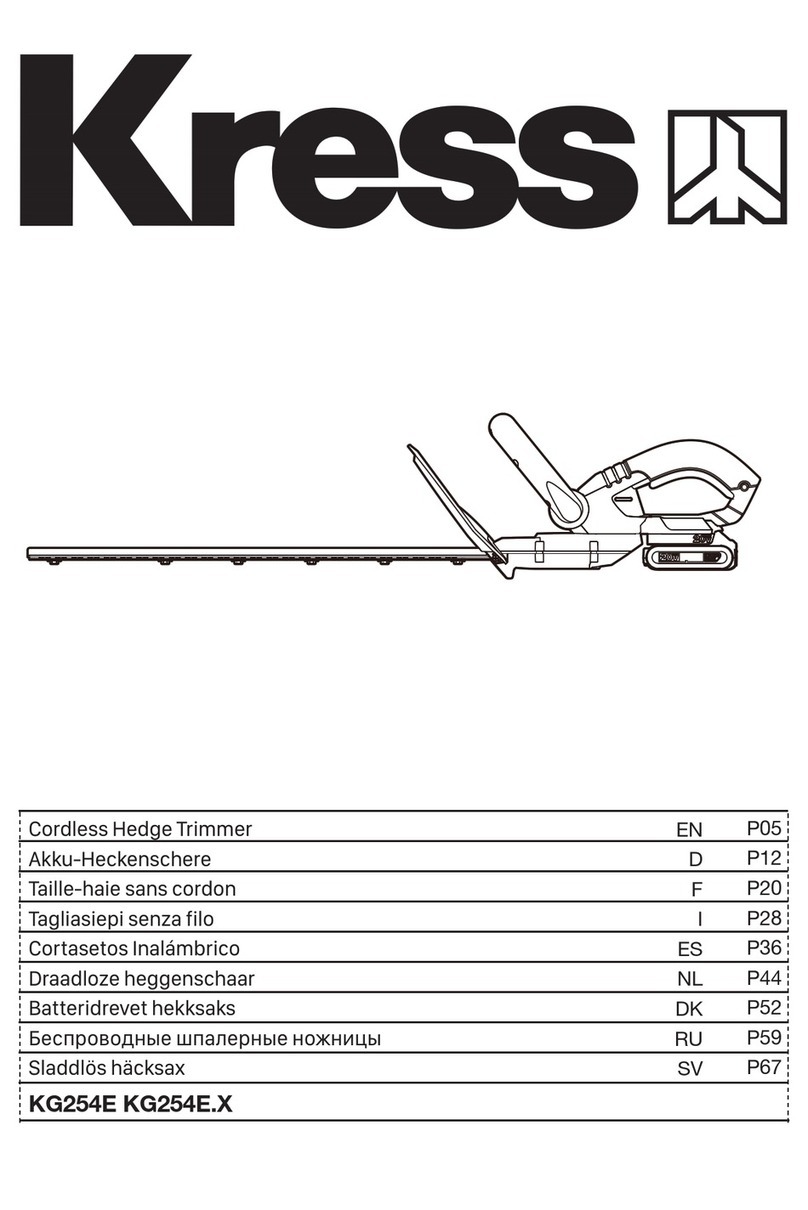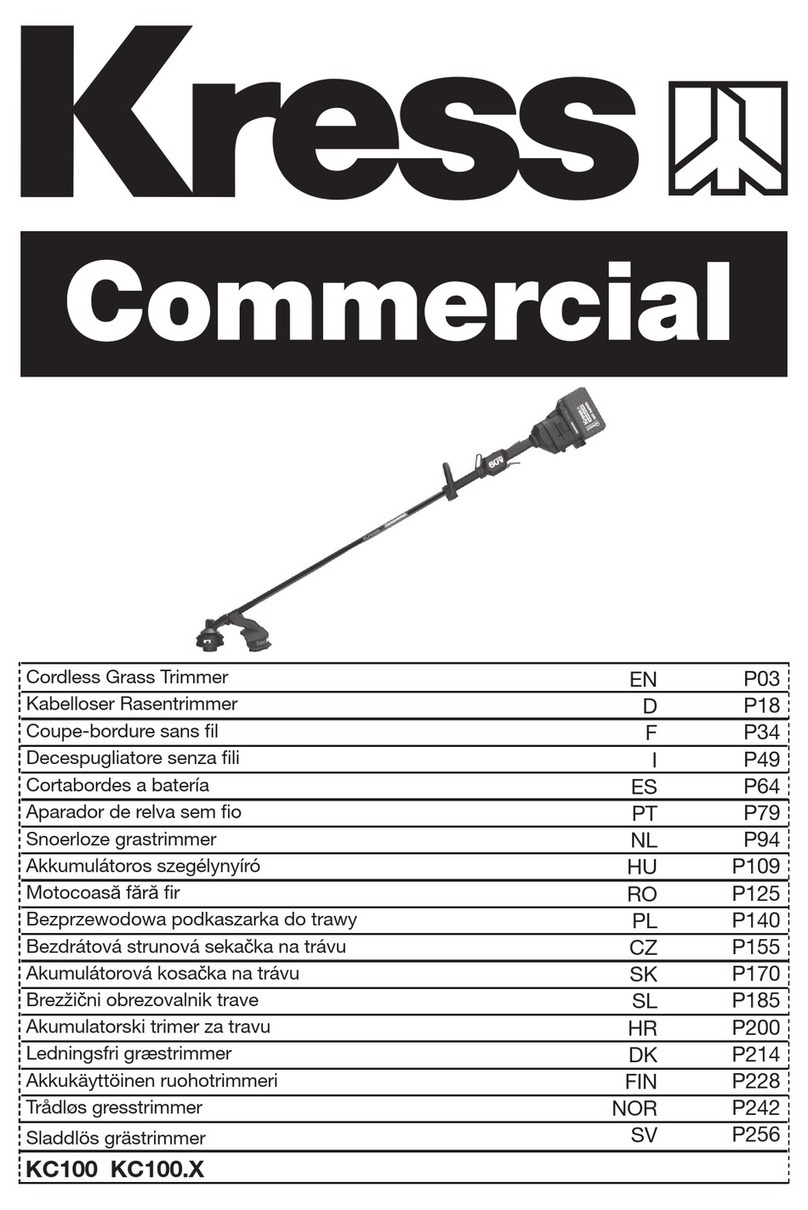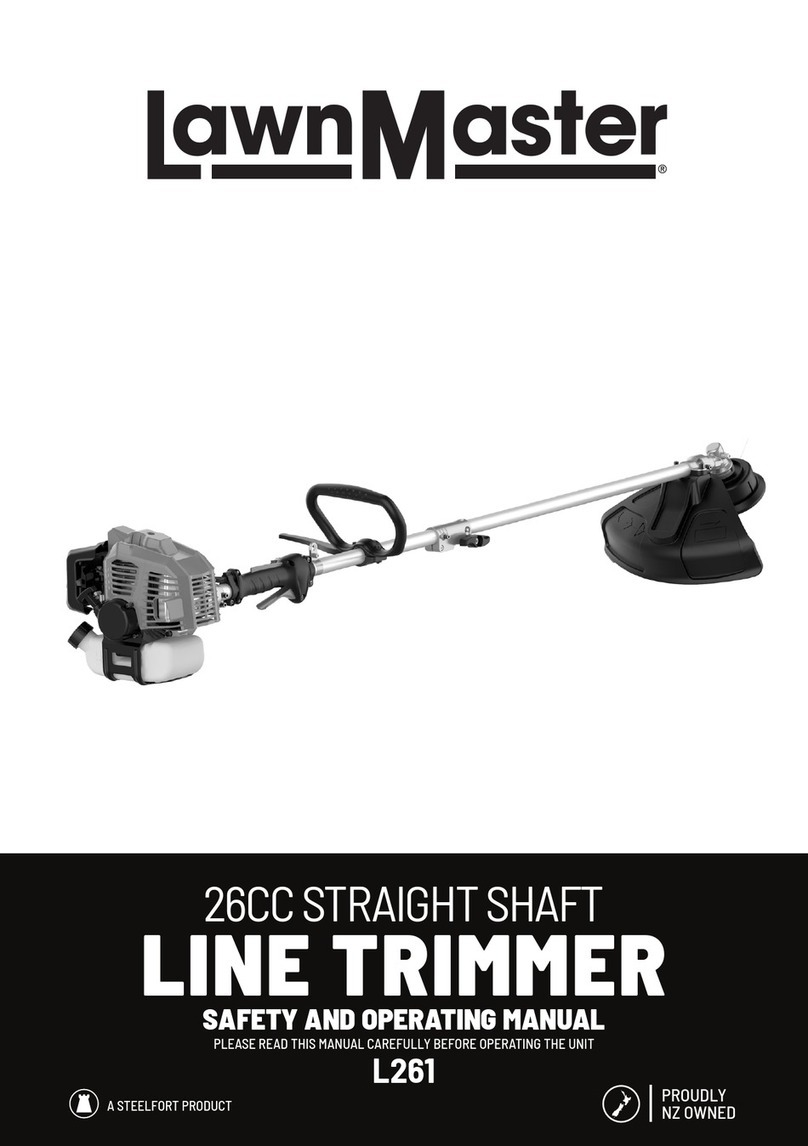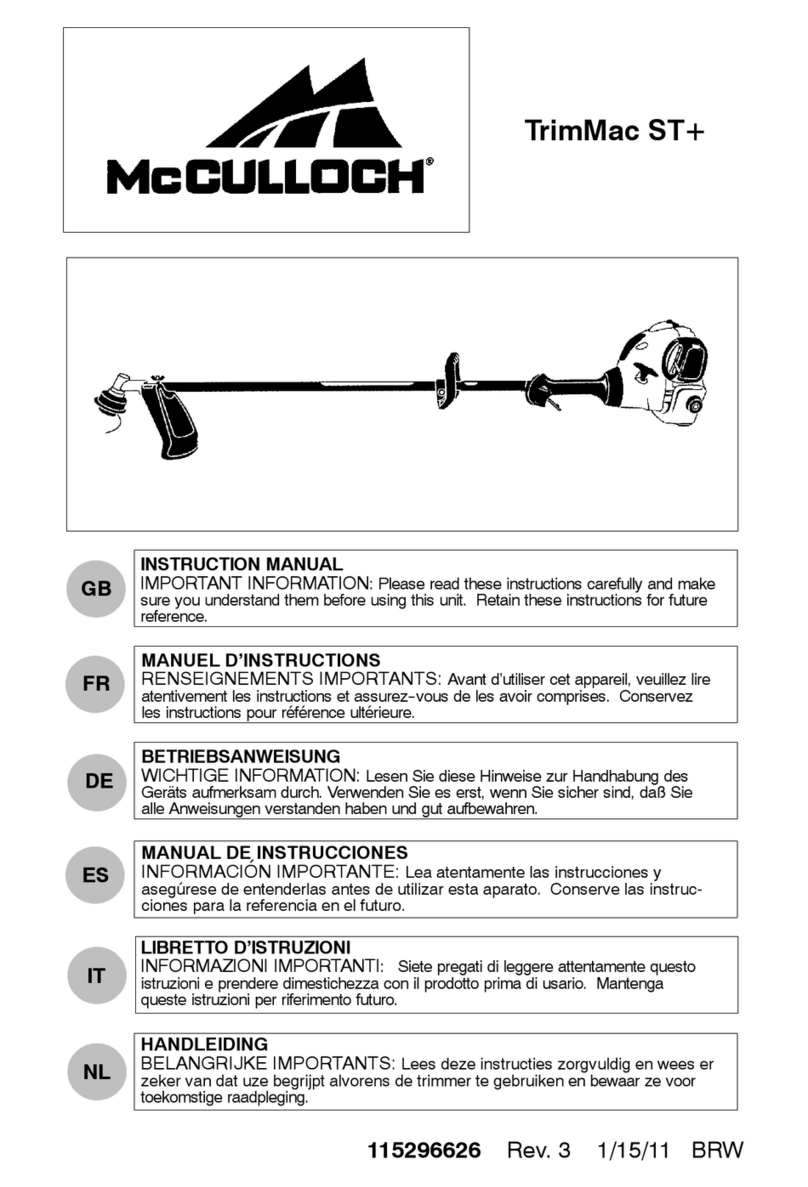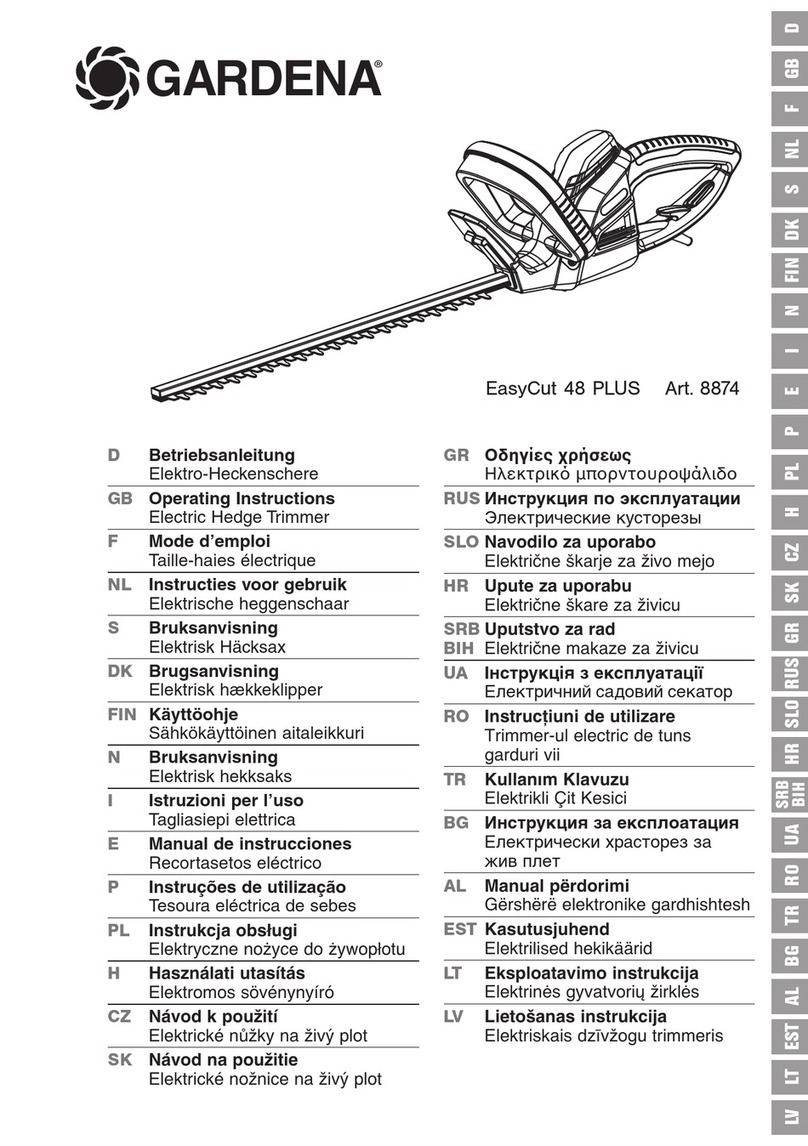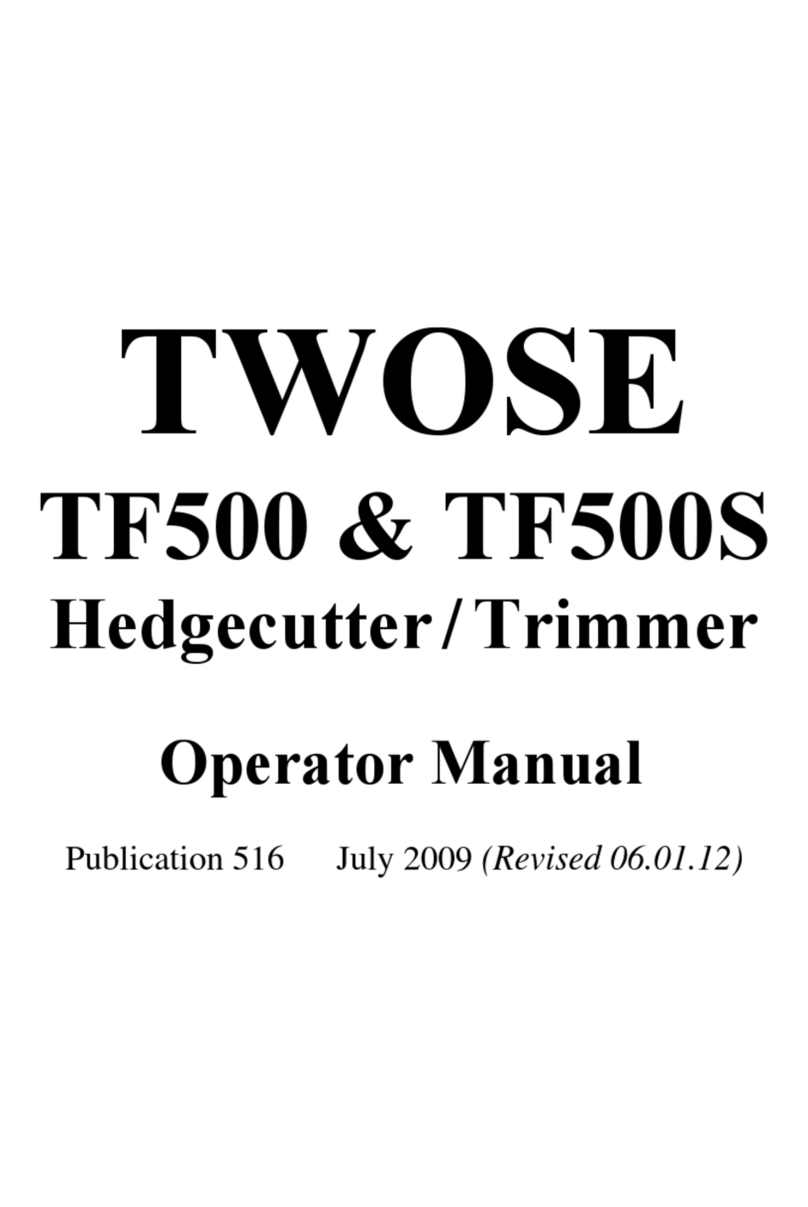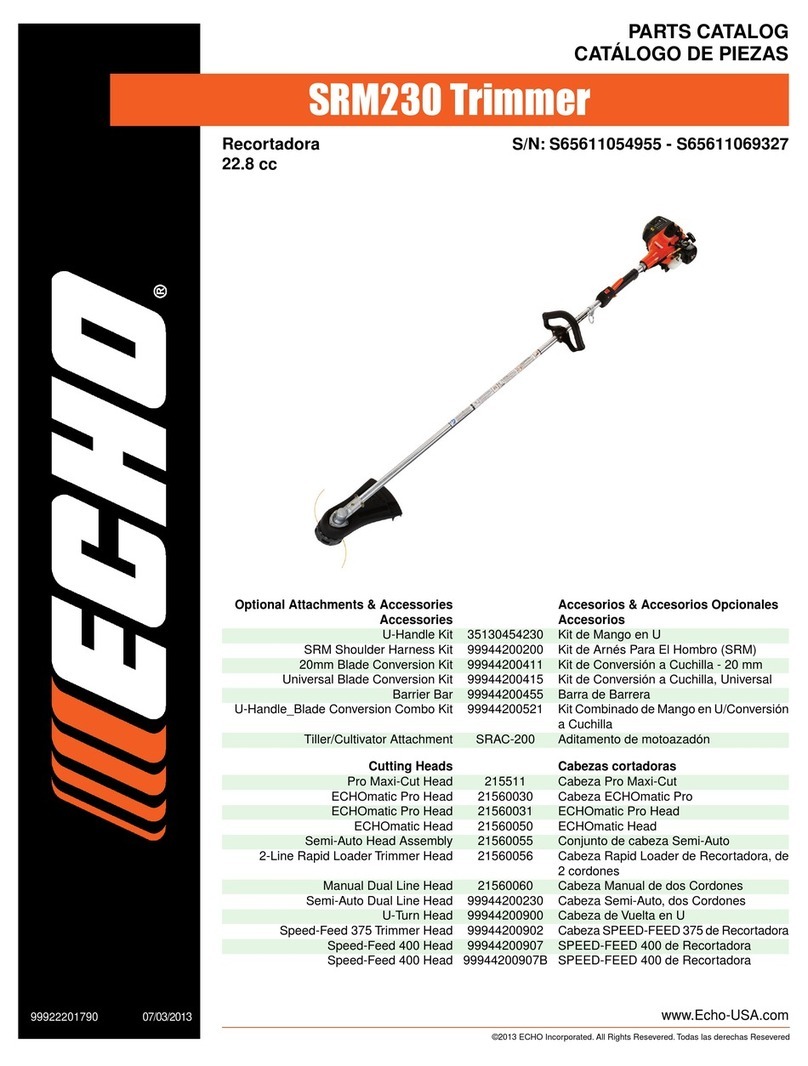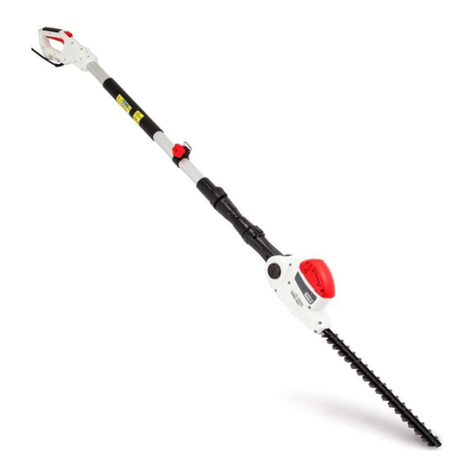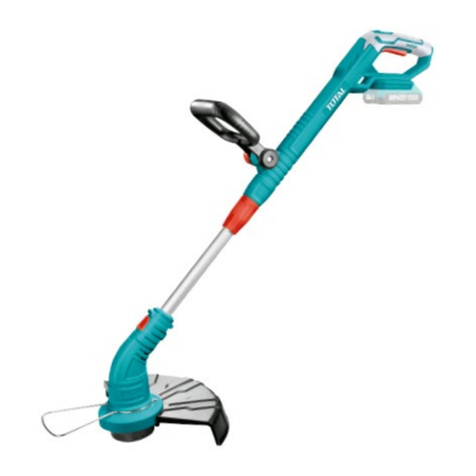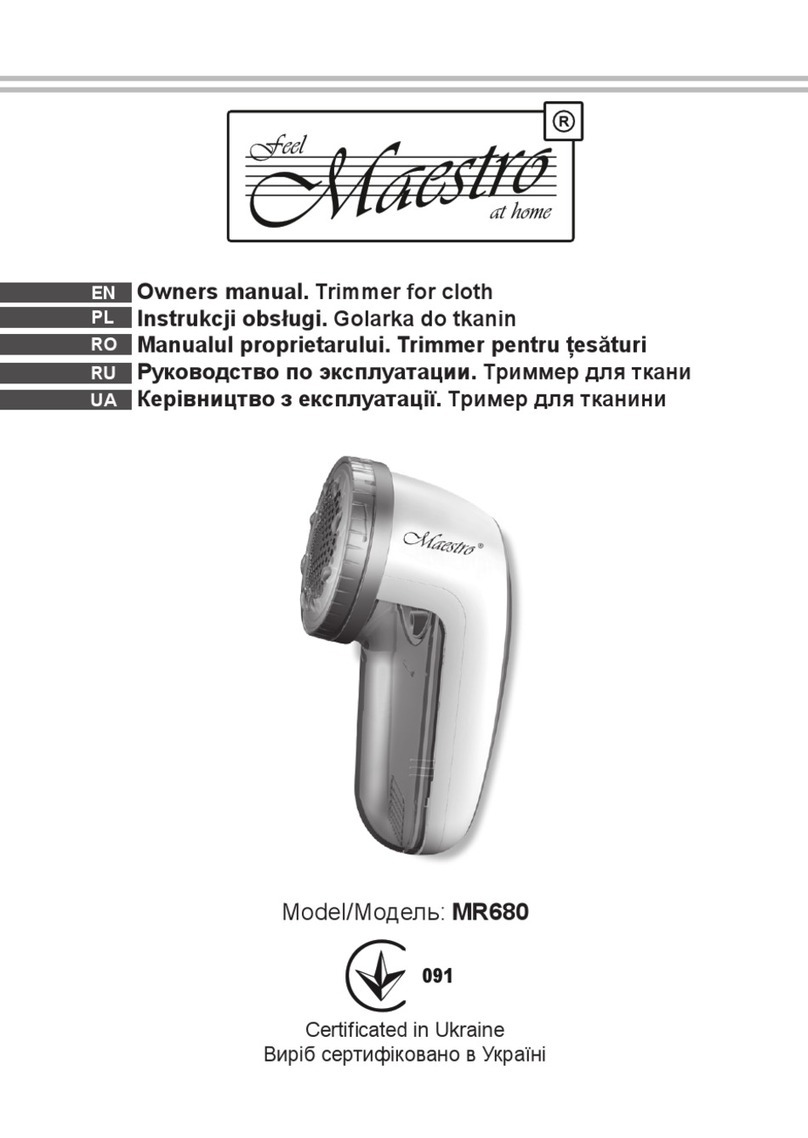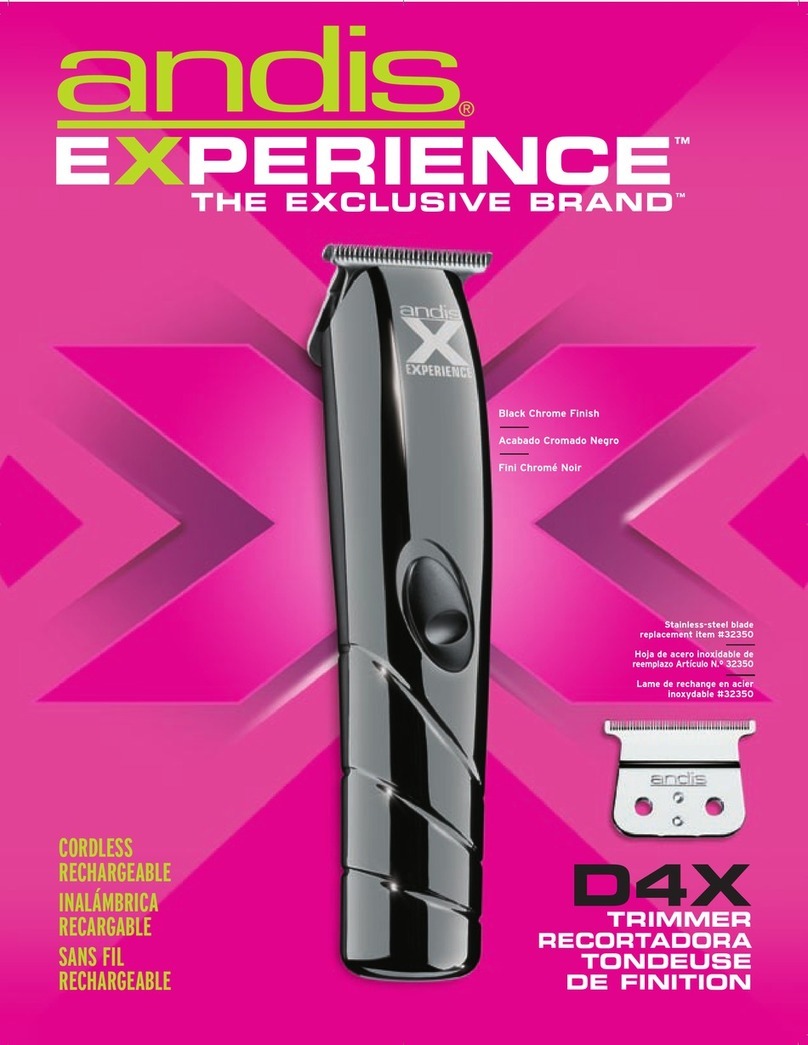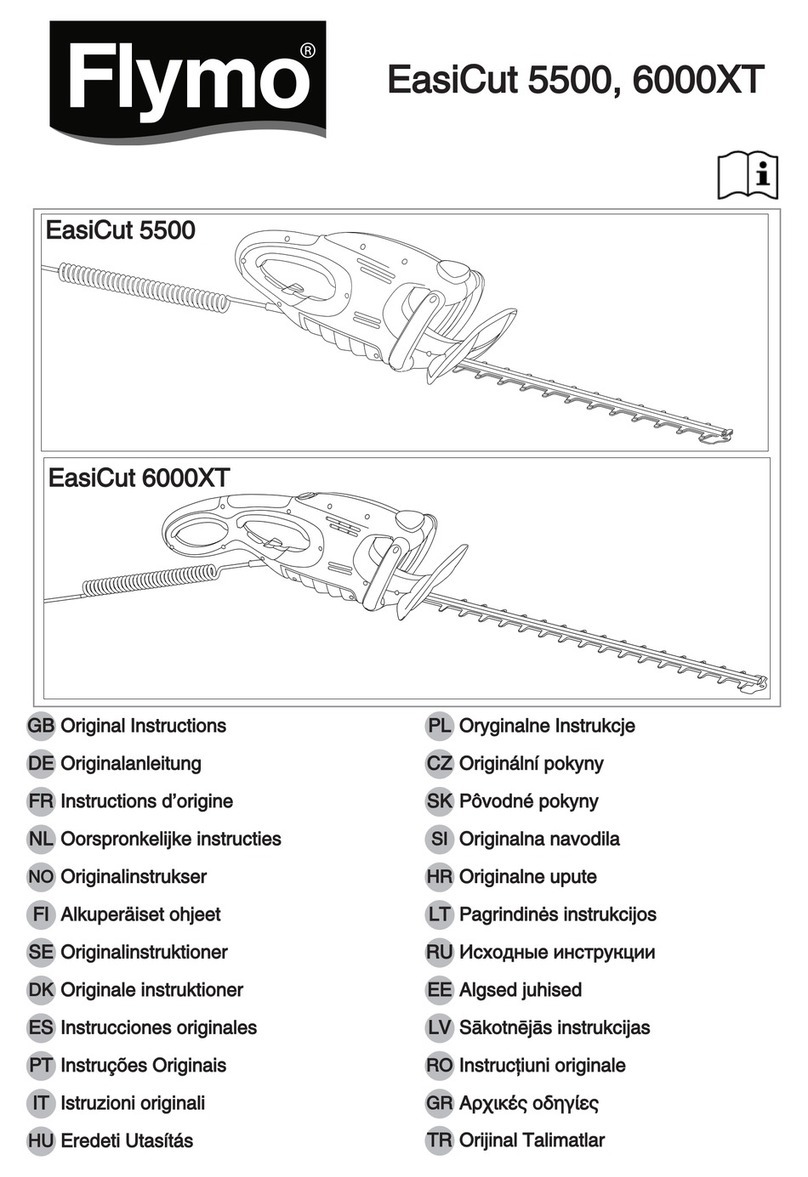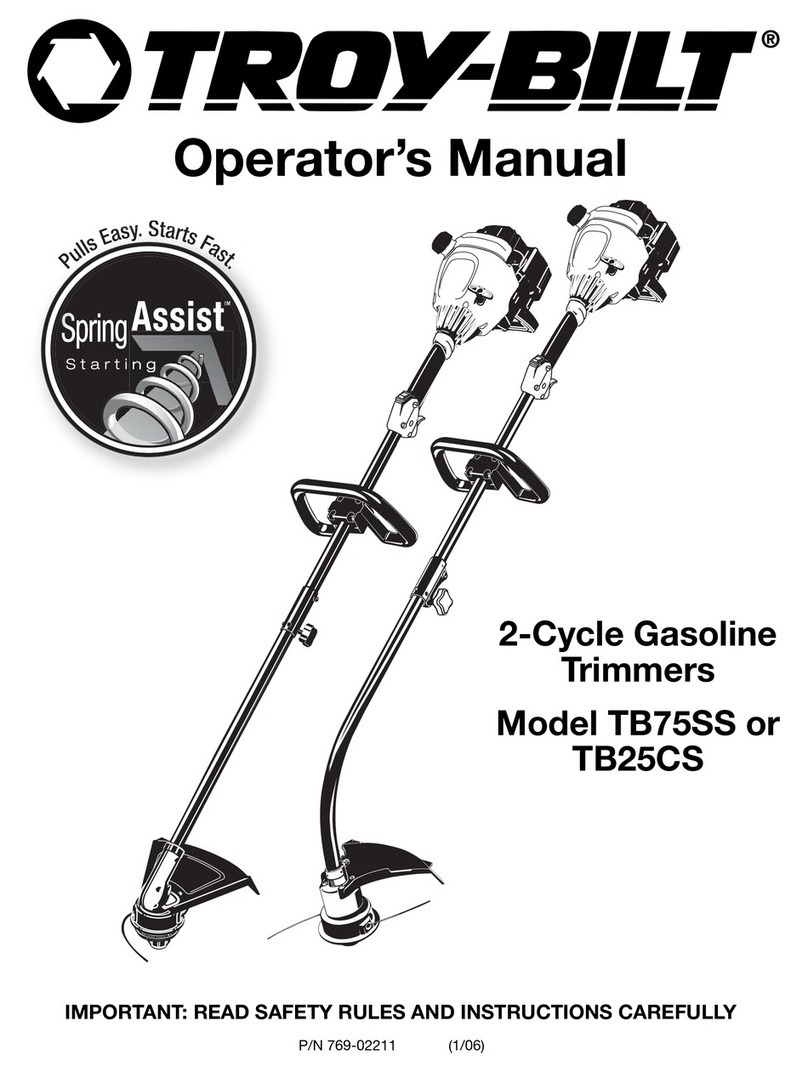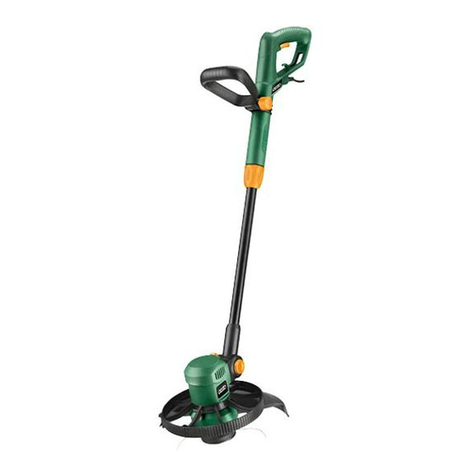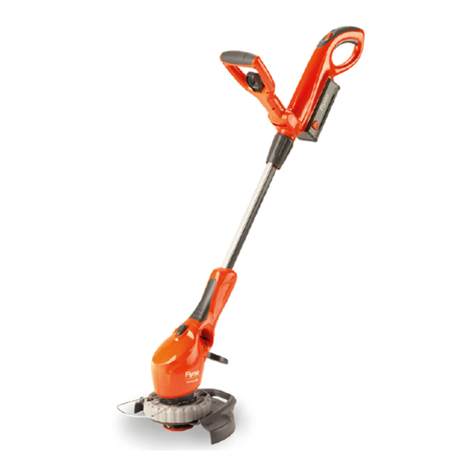
4
KG259E KG259E.X
KG260E KG260E.X
Cordless Hedge Trimmer
5. Battery tool use and care
a) Recharge only with the charger specied by the
manufacturer. A charger that is suitable for one type
of battery pack may create a risk of fire when used
with another battery pack.
b) Use power tools only with specically designated
battery packs. Use of any other battery packs may
create a risk of injury and fire.
c) When battery pack is not in use, keep it away from
other metal objects, like paper clips, coins, keys, nails,
screws or other small metal objects, that can make a
connection from one terminal to another. Shorting the
battery terminals together may cause burns or a fire.
d) Under abusive conditions, liquid may be ejected from
the battery; avoid contact. If contact accidentally
occurs, ush with water. If liquid contacts eyes,
additionally seek medical help. Liquid ejected from the
battery may cause irritation or burns.
e) Do not use a battery pack or tool that is damaged or
modied. Damaged or modified batteries may exhibit
unpredictable behaviour resulting in fire, explosion or
risk of injury.
f) Do not expose a battery pack or tool to re or excessive
temperature. Exposure to fire or temperature above
130 °C may cause explosion.
g) Follow all charging instructions and do not charge the
battery pack or tool outside the temperature range
specied in the instructions. Charging improperly or
at temperatures outside the specified range may
damage the battery and increase the risk of fire.
6. Service
a) Have your power tool serviced by a qualied repair
person using only identical replacement parts. This
will ensure that the safety of the power tool is
maintained.
b) Never service damaged battery packs. Service of
battery packs should only be performed by the
manufacturer or authorized service providers.
HEDGE TRIMMER SAFETY
WARNINGS
a) Keep all parts of the body away from the blade. Do not
remove cut material or hold material to be cut when
blades are moving. Blades continue to move after the
switch is turned off. A moment of inattention while
operating the hedge trimmer may result in serious
personal injury.
b) Carry the hedge trimmer by the handle with the blade
stopped and taking care not to operate any power
switch. Proper carrying of the hedge trimmer will
decrease the risk of inadvertent starting and resultant
personal injury from the blades.
c) When transporting or storing the hedge trimmer, always
t the blade cover. Proper handling of the hedge
trimmer will decrease the risk of personal injury from
the blades.
d) When clearing jammed material or servicing the unit,
make sure all power switches are off and the battery
pack is removed or disconnected. Unexpected
actuation of the hedge trimmer while clearing
jammed material or servicing may result in serious
personal injury.
e) Hold the hedge trimmer by insulated gripping surfaces
only, because the blade may contact hidden wiring.
Blades contacting a “live” wire may make exposed
metal parts of the hedge trimmer “live” and could
give the operator an electric shock.
f) Keep all power cords and cables away from cutting
area. Power cords or cables may be hidden in
hedges or bushes and can be accidentally cut by the
blade.
g) Do not use the hedge trimmer in bad weather
conditions, especially when there is a risk of lightning.
This decreases the risk of being struck by lightning.
h) Check the hedges and bushes for foreign objects, e.g.
wire fences and hidden wiring.
i) Hold the hedge trimmer properly, e.g. with both hands if
two handles are provided.
j) The hedge trimmer is intended to be used by the
operator at ground level and not on ladders or any other
unstable support.
l) Before operating the hedge trimmer, the user should
make sure the locking device(s) of any moving elements
(e.g. the extended shaft and pivoting element), if any,
are in the locked position.
m) Have any adjustable stopping mechanism maintained at
regular intervals.
SAFETY WARNINGS FOR BATTERY
PACK
a) Do not dismantle, open or shred cells or battery pack.
b) Do not short-circuit a battery pack. Do not store battery
packs haphazardly in a box or drawer where they
may short-circuit each other or be short-circuited
by conductive materials.
When battery pack is not
in use, keep it away from other metal objects, like
paper clips, coins, keys, nails, screws or other small
metal objects, that can make a connection from one
terminal to another. Shorting the battery terminals
together may cause burns or a re.
c) Do not expose battery pack to heat or re. Avoid storage
in direct sunlight.
d) Do not subject battery pack to mechanical shock.
e) In the event of battery leaking, do not allow the liquid
to come into contact with the skin or eyes. If contact
has been made, wash the affected area with copious
amounts of water and seek medical advice.
f) Seek medical advice immediately if a cell or battery
pack has been swallowed.
g) Keep battery pack clean and dry.
h) Wipe the battery pack terminals with a clean dry cloth if
they become dirty.
i) Battery pack needs to be charged before use. Always
refer to this instruction and use the correct charging
procedure.
j) Do not maintain battery pack on charge when not in
use.
k) After extended periods of storage, it may be necessary
to charge and discharge the battery pack several times
to obtain maximum performance.
l) Recharge only with the charger specied by Kress.








